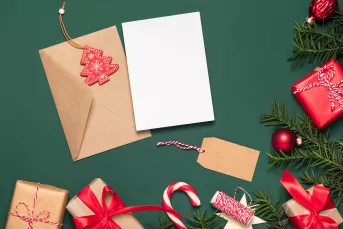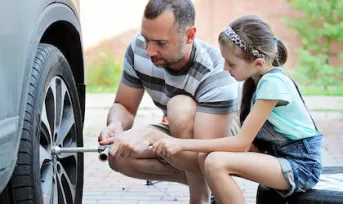
7 Low-Cost Garden Hacks
Love gardening but don't want to break the bank? Thinking outside the box can give you a beautiful garden without draining your bank account. We've put together a list of 7 low-cost garden hacks to help you save money and reduce waste.
1. Sift soil with a salad spinner
New garden tools add up quickly. But did you know you can use an old salad spinner as a soil-sifting tool? A large-capacity spinner with a removable inner basket or colander works best for this garden hack.
Sift soil in batches on a flat surface in a well-ventilated area. Avoid overloading the basket to make it easier to turn the spinner. You'll be surprised at the sifting quality you can achieve!
2. Save those coffee grounds
Used coffee grounds provide several gardening benefits. They:
- Provide nitrogen and micronutrients.
- Balance carbon-to-nitrogen ratios.
- Speed up decomposition in compost piles.
- Improve soil quality and water retention.
- Eliminate harmful bacteria and fungi from soil.
They can also be used as a fertilizer for acid-loving plants and their odor deters pests like snails, slugs, and certain insects.
However, don’t spread coffee grounds near geraniums, asparagus ferns, mustard, clover, or alfalfa, as coffee interferes with seed germination for these plants. Also, skip using them for potted plants as they create unhealthy salt levels in the soil of potted plants.
3. Turn eggshells into plant food
Cracking an egg and tossing the shell is second nature, but did you know those eggshells can be a valuable source of calcium for your garden?
Instead of throwing them away, rinse the eggshells and place them in an open container to dry. Once dry, roughly crush them to make them easier to store. When you have enough saved up and ready for the garden, pulverize the broken shells into a fine powder using a blender or mortar and pestle.
Work the eggshell powder into your garden soil in the fall so the nutrients are ready for spring planting.
4. Regrow vegetables in water
Propagating fruit or veggie scraps in water is an inexpensive way to grow plants indoors or create plant starters for your garden. Use clear containers of lukewarm water on a sunny windowsill and change the water often to prevent mold.
Easy-to-propagate produce includes beets, cabbage, lettuce, carrots, celery, bok choy, fennel, green onions, sweet potatoes, and spinach. You can also root herbs like basil or cilantro in water, but make sure no leaves touch the water.
5. Deter birds with Christmas ornaments
To prevent birds from eating your tomatoes before you can harvest them, try hanging round red Christmas ornaments on your cages or trellises.
Attach the ornaments as soon as you see small green fruits developing. When the birds investigate the red ornaments, they’ll peck at them only to find that they’re hard (and not food!). The birds should give up after just a few attempts to feed. Be sure to leave the ornaments in place until your real tomatoes are ripe and ready for harvesting.
6. Make your own biodegradable seed trays
Did you know paper egg cartons and toilet paper rolls make great biodegradable seed trays? If you’re using paper towel or toilet paper tubes, cut them into 2-inch lengths. Line them on a waterproof tray, fill them with soil, add the seeds, and water frequently.
When your seedlings are ready for the garden, plant your tubes or sections of egg carton into the ground, completely burying the cardboard to prevent it from wicking moisture away from tender seedling roots.
7. Reuse cardboard boxes in the garden
All those Amazon boxes you’ve been holding onto are perfect for sheet mulching, a composting method where compost is placed directly in the garden. This method is sometimes referred to as "lasagna gardening" because you layer biodegradable organic material to decompose. But you should only use plain cardboard boxes free from any staples or tape.
Start sheet mulching in the fall so the layers have time to break down and form a rich compost for spring planting. Prepare the soil by breaking it up and adding necessary amendments, shred all plant material to be used, and start building your compost "lasagna."
Here’s what you need to do:
- Step 1. Start with a thin layer of grass clippings, hedge trimmings, or leaves, or finished compost.
- Step 2. Lightly water the first layer.
- Step 3. Lay non-glossy newspaper without tape, staples, or stickers.
- Step 4. Water the newspaper layer.
- Step 5. Add more plant material or compost, cover with newspaper, and water.
- Step 6. Repeat the layers until you have several inches of sheet mulching, finishing with a compost/plant material layer.
- Step 7. Cover the area with cardboard, overlapping pieces by 6 inches.
- Step 8. Give your compost lasagna a final layer 6 inches deep using straw, leaves, yard waste, or bark chips.
- Step 9. Water weekly if needed. If in a wet area, cover with black plastic to prevent soggy conditions and speed up decomposition.
To simplify the sheet mulching process down to the basics, use three ingredients: compost, cardboard, and straw.
Harvest the savings of low-cost gardening
We hope you’re inspired to use some of our budget-friendly garden hacks in your garden this year. The more of them you use, the more money you can save!
For more low-cost gardening ideas, don’t miss our article Starting a Garden on a Budget.
Notice: Information provided in this article is for informational purposes only. Consult your attorney or financial advisor about your financial circumstances.


